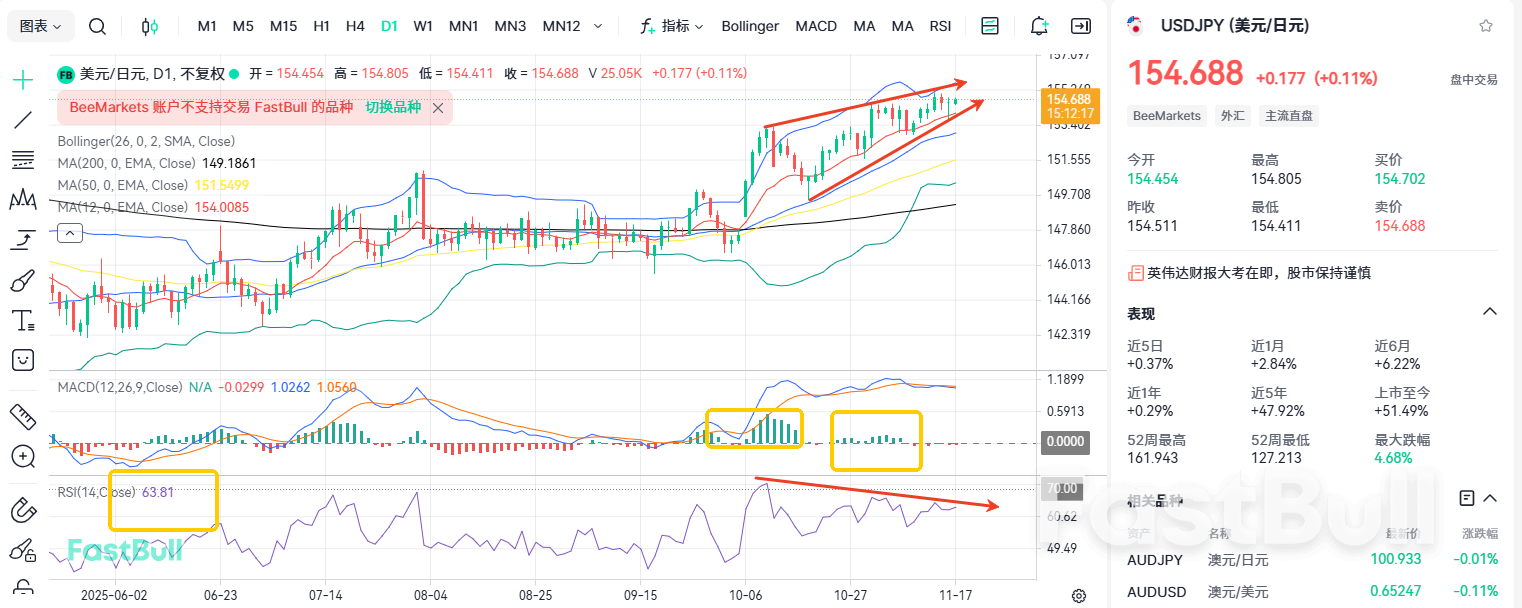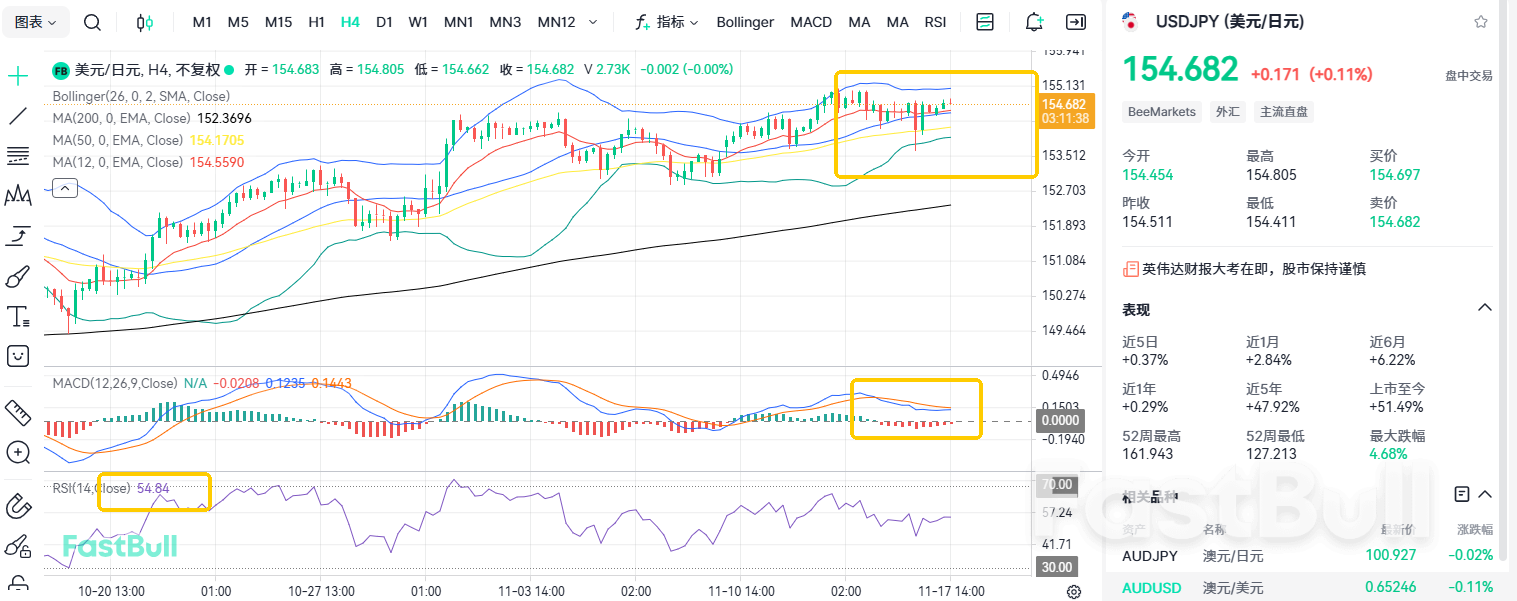Fundamentals
Minutes of the October meeting reveal that, within the Policy Board, the case for a near-term hike is strengthening: a majority stressed the need to entrench sustained wage momentum. Eight of the thirteen Policy Board opinions explicitly called for an early rate increase or the prompt setting of conditions for one. Provided global growth and markets remain stable, the Bank could move as soon as next month or in January. However, the exact timing still hinges on whether stronger corporate earnings and management sentiment further bolster confidence that wage growth will persist.
While the Board concluded that an immediate move is not imperative, members warned against missing the opportune moment to raise the policy rate. Several noted that prerequisites for normalisation are largely in place, but flagged the need for additional evidence of underlying inflation's resilience. At the 30 October meeting the BoJ left the overnight call rate at 0.5%. Directors Naoki Tamura and Hajime Takata dissented, favouring an immediate 25 bp hike to 0.75%. Governor Kazuo Ueda reiterated afterward that the BoJ will keep scrutinising data to verify whether firms can maintain wage hikes even as the U.S. raises tariffs. Board member Junko Nakagawa cited still-fragile consumption and uncertainty over the U.S. outlook as key downside risks.
The minutes explicitly flag U.S. tariff adjustments and Japan's upcoming wage negotiation cycle as pivotal inputs for the next policy step.
Prime Minister Takaichi's dovish stance has materially diluted the authorities' resolve to counter yen weakness. Although Ministry of Finance officials continue to issue verbal warnings against excessive JPY selling, a bloc of fiscal-expansion, low-rate advisors inside the new cabinet argues that a softer yen cushions exports and offsets U.S. tariff shocks, blunting the market impact of official rhetoric.
Participants now assign a low probability to yen depreciation becoming a policy priority unless USDJPY breaks 155–160, the threshold at which escalation—from stronger jawboning to outright intervention—becomes plausible.
Comments by Satsuki Katayama that the negative spill-overs of yen weakness now outweigh the positives failed to lift the currency in the absence of a credible intervention threat.
Persistent intragovernment divergence on the desirability of a weak yen reinforces expectations that the BoJ will slow the pace of rate normalization.
With the Takaichi administration pushing an expansionary agenda, the market prices only a gradual further hike trajectory.
If the BoJ opts for an extended pause, FX intervention would be the lone remaining line of defense. However, the U.S. opposition and the negative real-rate backdrop mean any yen-buying operation risks burning reserves with limited lasting effect.
With key U.S. data releases delayed by the government shutdown, Fed officials have stepped up their messaging. Three regional Fed presidents reiterated inflation concerns, while the Board's most dovish member argued that the available data justify another rate cut.
Amid the widening policy split, market pricing has shifted sharply. By Friday's close, fed-funds futures priced a 60% probability of no move in December. Just one day earlier, the market had priced the probability of a rate cut at roughly 50/50. In the weeks that followed the 29 October policy decision, the consensus had instead coalesced around a December easing.
Several Fed officials on Friday reiterated their hawkish stance, including Kansas City Fed President Jeffrey R. Schmid, Dallas Fed President Lorie Logan, and Cleveland Fed President Beth Hammack. Speaking at the Pittsburgh Economic Club, Hammack said it is "not yet clear that monetary policy needs to do more." Logan added that, absent stronger evidence that inflation is falling faster than expected or that the labor market is cooling significantly more quickly, she would find it hard to support a December rate cut. Schmid likewise noted that the arguments that led him to oppose October's cut apply equally to the December meeting and emphasized that further easing would do little to relieve the structural strains in the labor market stemming from shifts in technology and immigration policy.
In sharp contrast, Fed Governor Stephen Miran has used two consecutive public appearances to press for another cut. At the October FOMC he voted with Schmid against the decision, having favoured a reduction larger than the ultimately delivered 25 bp. Miran—who will rejoin the White House as an economic adviser when his term expires in January—sides with President Trump in viewing the current funds-rate target as excessively restrictive. Chair Jerome Powell said in October that the moves so far were meant to hedge against a deterioration in labour-market conditions, but cautioned that the government shutdown has delayed key data, leaving the Committee "in a wait-and-see mode." A December cut, he stressed, is "anything but a foregone conclusion."
Technical Analysis
On the daily chart, Bollinger bands on USDJPY are widening with upward-sloping rails. The MAs remain bullishly aligned, leaving the primary up-trend intact. Price, however, is carving out a rising wedge while MACD histograms shrink, signalling waning momentum. RSI sits at 63—still exuberant. As long as the pair holds above the EMA12, the probability favours a retest of the upper Bollinger band at 155.50 and the psychological 160 handle.
On the 4-hour chart, Bands are pinching and the ribbon has flattened. MACD fast/slow lines have pulled back to the zero-axis and a bullish crossover is pending, flagging an imminent volatility expansion. RSI is neutral at 54, reflecting wait-and-see positioning. A decisive break below the mid-band opens the EMA200 (152.20). Conversely, sustained clearance of the mid-band targets 156.00.
In summary, traders are recommended to go long at lows in the short term.
Trade Recommendations
Trade Direction: Buy
Entry Price: 154.6
Target Price: 158.8
Stop Loss: 151
Support: 150/148.5/146.6
Resistance Levels: 155/156.7/158.8














